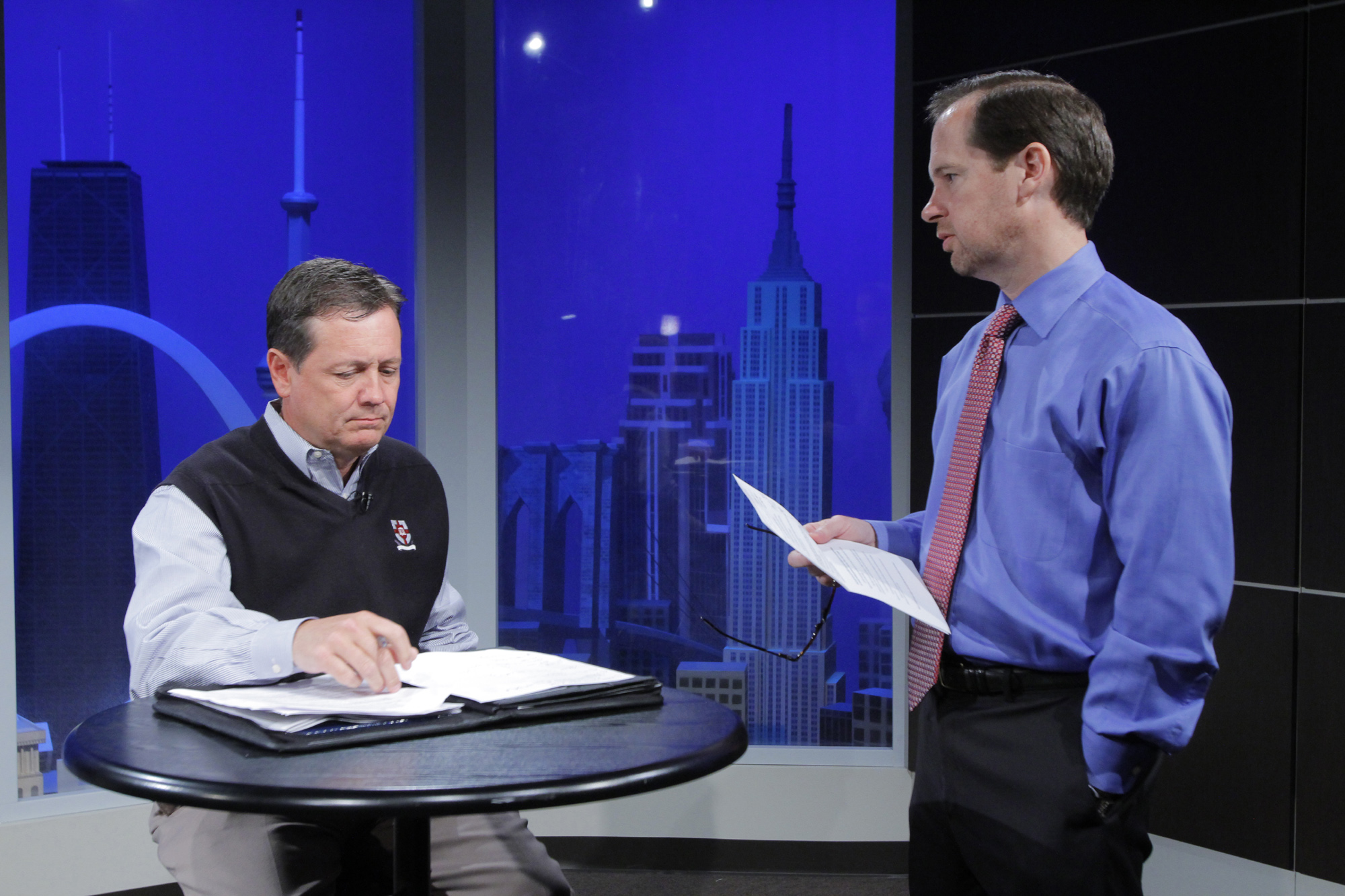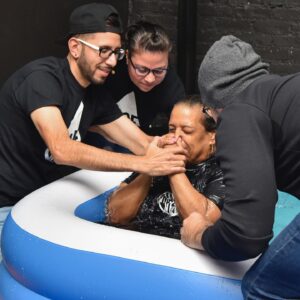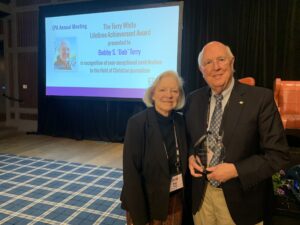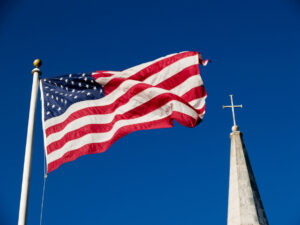
ALPHARETTA, Ga. (BP) — Evangelism remains a critical part of the North American Mission Board’s strategy for penetrating lostness in North America, NAMB President Kevin Ezell told directors of missions and church planter catalyst missionaries in a live webcast April 9.
 During the webcast, Ezell answered questions and addressed concerns regarding changes in missionary roles and NAMB’s relationship with state Baptist conventions and associations.
During the webcast, Ezell answered questions and addressed concerns regarding changes in missionary roles and NAMB’s relationship with state Baptist conventions and associations.
“To penetrate lostness in North America we’ve got to work together,” Ezell said. “I just want to say how much I appreciate you and am thankful for you as directors of missions and church planter catalysts as we work together.”
Ezell began the webcast by addressing impressions that NAMB has de-emphasized evangelism in recent months.
“That is simply not the case,” he said. “We have half a million dollars more that we are spending on evangelism now [2012] than we were in 2009. So it has actually increased.”
Ezell said it would be wrong to conclude that since evangelism staffing levels at NAMB are lower, NAMB’s commitment to evangelism has decreased.
“In every area, our strategy has been fewer people in Alpharetta [NAMB’s headquarters city in Georgia] and to use more practitioners actually on the field. [Don’t] equate the amount of staff we have here in Alpharetta with the amount of emphasis we are placing on something.”
STATE PARTNERSHIPS
Ezell also addressed NAMB’s partnership with state Baptist conventions and the reasons for transitioning some money from state convention budgets in 2012. NAMB partners with state conventions to fund personnel and ministries throughout North America. The mission board will send more than $42 million to state convention partners in 2012, which represents a decrease of about $8 million.
“We did make some reductions,” Ezell said. “One thing that is important to know is that in 2013 and 2014 in all of the new work states there are no budget reductions.”
Most of the funding transitioned out of state convention budgets came from perpetual underspends. These are monies NAMB made available year after year to a particular state convention for a specific position or project, but which the state did not spend. Across all state conventions, these underspends totaled approximately $5 million annually.
“The problem with that is if I have money designated in a particular state budget, say out West, I can’t take that money out and use it in Philadelphia,” Ezell said. “So what we are trying to do is to move that money into an account called Send North America that is available [for use in] all the states we are trying to minister to, and it doesn’t keep it on lock down.”
Ezell said NAMB also looked at vacant missionary positions when transitioning state funds. “We would love to have a thousand missionaries in every state. That’s just not financially feasible. So as we look at where missionaries are serving, it’s not that we don’t want them where they are. It’s that we can’t afford to have that many in one state and not have any in another state. We have to align them strategically.”
For instance, Ezell said, Canada has 37 million people but only six church planting catalyst missionaries, while a particular state convention in the United States has 5 million people and 23 CPC missionaries. “It’s just out of balance,” he said.
Ezell explained that Send North America funds will go directly to church plants and church planters serving in a particular state. He drew a distinction between money NAMB sends directly to a state convention and total NAMB money invested in a particular state.
“We are not necessarily decreasing the amount of money we are putting into a state. Where a state [convention’s] budget may go down, the amount of money we are investing in that state may go up considerably.”
Ezell used California as an example. Three Send North America cities — San Francisco, Los Angeles and San Diego — will receive hundreds of thousands of dollars from NAMB to fund church plants there.
“So you take what we are investing in the state convention and then add the Send North America funds designated for those cities — there is more money going into California than there was last year or the year before.”
The reason for the funding shift is to ensure that NAMB’s money is invested in missionaries on the field. In one state convention in the West, Ezell said, only 25 percent of NAMB’s monies designated for church planting actually made their way directly to church plants or church planter missionaries.
“What we’re trying to do,” Ezell continued, “is to not spend as much money on infrastructure and [send] more money directly to those missionaries — the church plants and church planters. We are just making sure that money goes to the missionaries.”
TOP DOWN?
Asked if NAMB was taking more of a “top-down” approach to ministry rather than working through partnership and agreements, Ezell said “No.” He said some people might have that impression because NAMB has narrowed its focus in order to increase effectiveness.
“When you say, ‘Here is our focus,’ there are some things you have to delete or not do. And so we say, ‘Look, some of these things are outside of our area of focus.’ Some would interpret that as top-down.
“We are trying to provide a national strategy and in this national strategy there are some things we do want to partner [in], some things we do want to focus on,” Ezell said. With other things, “We’re not saying you can’t do that. We’re saying, ‘We wish you the very best in doing that and want to provide a few years of transition so you can do that on your own.’ Our responsibility is to identify national needs and to help everybody come together in a national strategy to help meet those needs.”
Asked who determines the church plant strategy for NAMB’s Send North America cities, Ezell responded, “The strategy is determined locally. What we … are doing is getting those local leaders together, and the director of missions from that city should be involved — the state [convention], the association, they are involved. And what they are to do is to identify where those church plants are needed, how many are needed, what type of church plant. They come up with the strategy and … what we are trying to do with the national strategy is to get churches from all over North America to help plant those churches.”
Ezell acknowledged that, “We did do a sprint in the first two years to try to change some things around,” but he said NAMB is not trying to implement change at a pace faster than suggested by the Great Commission Resurgence Task Force.
“We have told every state, as we make these transitions, ‘We want to work with you.’ And if at any time if it is too fast, too slow — we’ve gone back a number of times and said, ‘Let’s adjust this to make it more palatable for you.'”
Ezell displayed a map of North America depicting Southern Baptist congregation-to-population ratios. States with the greatest needs are shown in red while those with the most congregations per people are shown in green.
“We’ve got to have a national comprehensive strategy that includes everyone. Every lost person in North America should be valued,” Ezell said. “We’re going to be planting churches all over and partnering with states to do that. But where we’re trying to focus strategically is those areas where we’re not penetrating lostness very well.”
–30–
Reported by the North American Mission Board’s communications staff. To view Kevin Ezell’s video forum with directors of missions and church planter catalyst missionaries, visit kevinezell.com.















